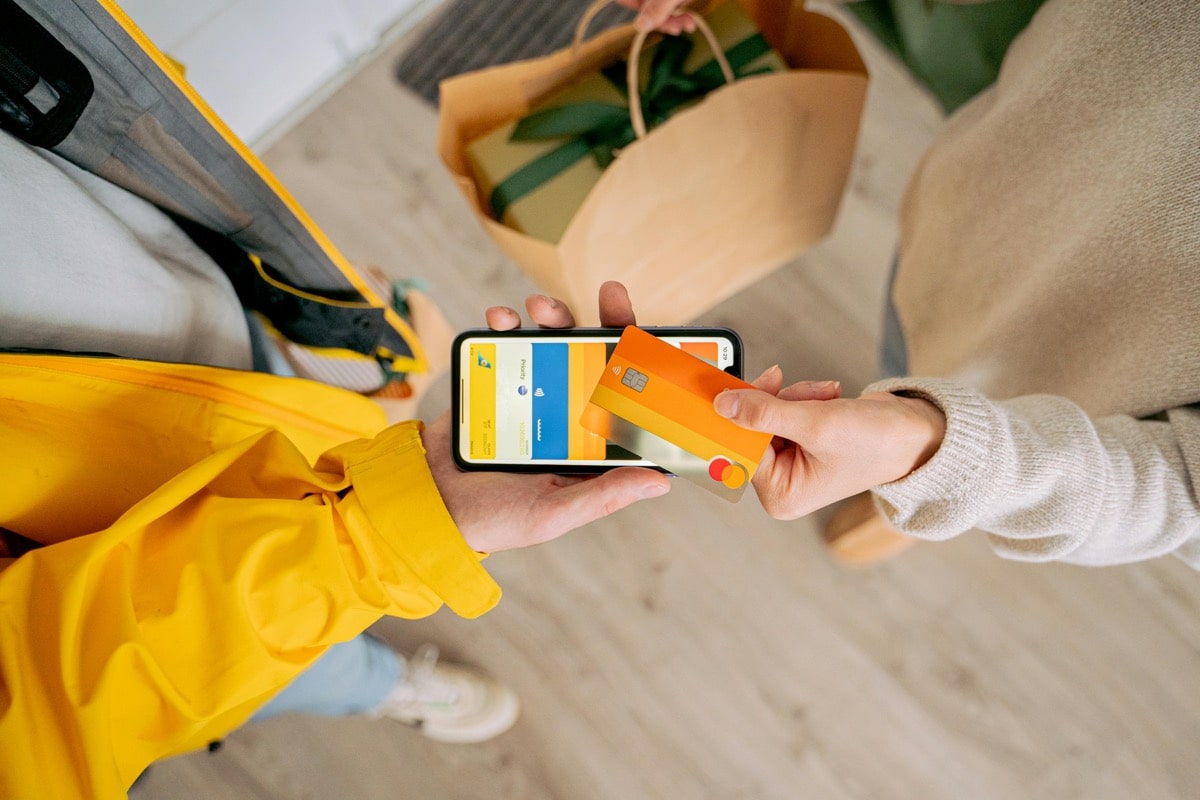We all remember 2020 when the pandemic threat made contactless the new black. The fewer objects you touch, the less risk of infection. The payments industry was one of the most impacted sectors since cash was listed among the main virus transmitters. However, the world has rebounded from the Covid narratives and most economic sectors went back to normal. What about contactless payments? Are they subsiding or still in full bloom? And what do contactless payment trends suggest for the future? We’ll try to find answers to all these questions with a little help of stats and analytics.
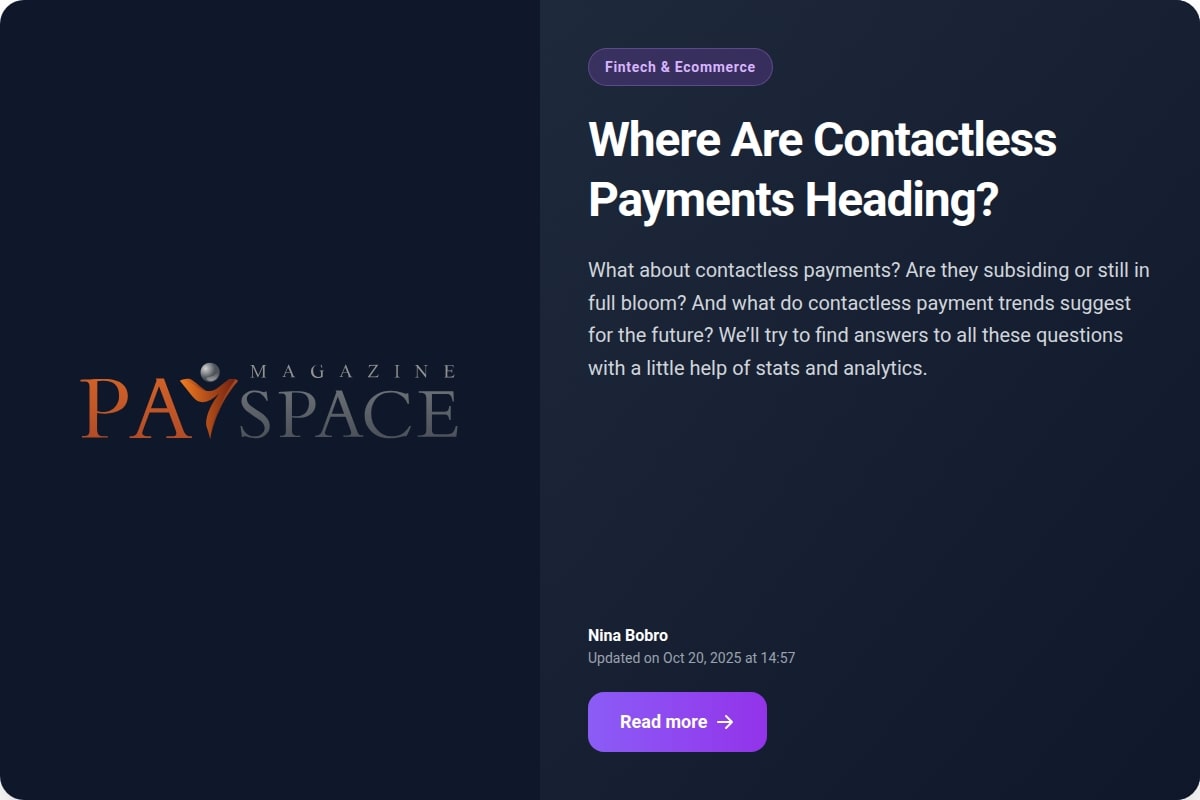
Types of Contactless Payments
A contactless payment is a wireless financial transaction. It allows customers to make payments without direct contact with the payment terminal or cashiers, unlike using cash or swiping the card. Instead, the buyer taps or waves their device near a point-of-sale terminal equipped with the NFC (near-field communication) and RFID (Radio frequency identification) technologies or scans a QR code.
The major forms of payment methods that consumers can use for contactless transactions are:
- Contactless chip cards – bank cards (debit/credit) which include a chip with a personal identification number (PIN) or a chip with a digital signature and a radio antenna. This antenna can detect a signal from the terminal’s card reader. When making a purchase, radio waves share your bank account or contactless card details with the merchant’s PoS device.
- Mobile wallets – Contactless mobile payments are initiated via a smartphone or wearable application that acts as a digital wallet. A digital wallet enables users to upload multiple cards to pay with. Smartphones and wearables (smartwatches, payment rings, fitness trackers, or clothing items) are equipped with NFC technology to pick up the card reader’s signal and convey the necessary payment information.
- NFC-Enabled Crypto Wallets – some cold crypto wallets support NFC technology for contactless payments. This allows users to make contactless payments by tapping their device on a PoS terminal. NFC crypto wallets can potentially be in a wearable form as well. The pioneer example is Tangem crypto wallet ring.
- QR Code Scanners – Quick Response (QR) Code payments are another form of contactless payments. It requires a camera to scan the code and proceed to the payment link. Most smartphones include cameras that can scan QR codes. However, other wearable devices are not equipped with QR code scanners.
Who Uses Contactless Payments and How Often?
Digital or mobile wallet payments were the most used payment method globally in bricks-and-mortar shops in 2024 and are expected to grow at a CAGR of 15.2% between 2024 and 2030. That includes both mobile money wallets and wallets that allow for contactless card payments on a mobile device.
China Is The Global Leader in Contactless Payment Adoption
At the same time, the popularity of tap-to-pay transactions varies in different regions. Thus, China, for example, had 86,8 billion contactless card transactions in 2022, while India, where the population number is similar, recorded only 4,8 billion of such payments. The United States recorded 20,47 billion of contactless card payments that year.
In the UK and Canada, the number of contactless card transactions reached about 5 billion at the given period, while Japan saw only around 2 billion.
Moreover, British universal bank Barclays, which powers nearly half of the nation’s credit and debit card transactions, estimated that a record 91.2% of all eligible transactions were made using contactless technology in 2022. The 49.7% growth in contactless payment value in the UK may be attributed to the increase of the contactless spending limit from £45 to £100. The same scenario was observed in other countries where contactless spending limits were raised.
As for mobile payments, China also takes the lead, with over 185 billion transactions worth about 555 trillion yuan in 2023. The two local market leaders are digital wallets WeChat Pay and Alipay. Almost 70% of consumers in China use WeChat Pay every day.
Nordic Countries Are Among the Most Frequent Users of Contactless
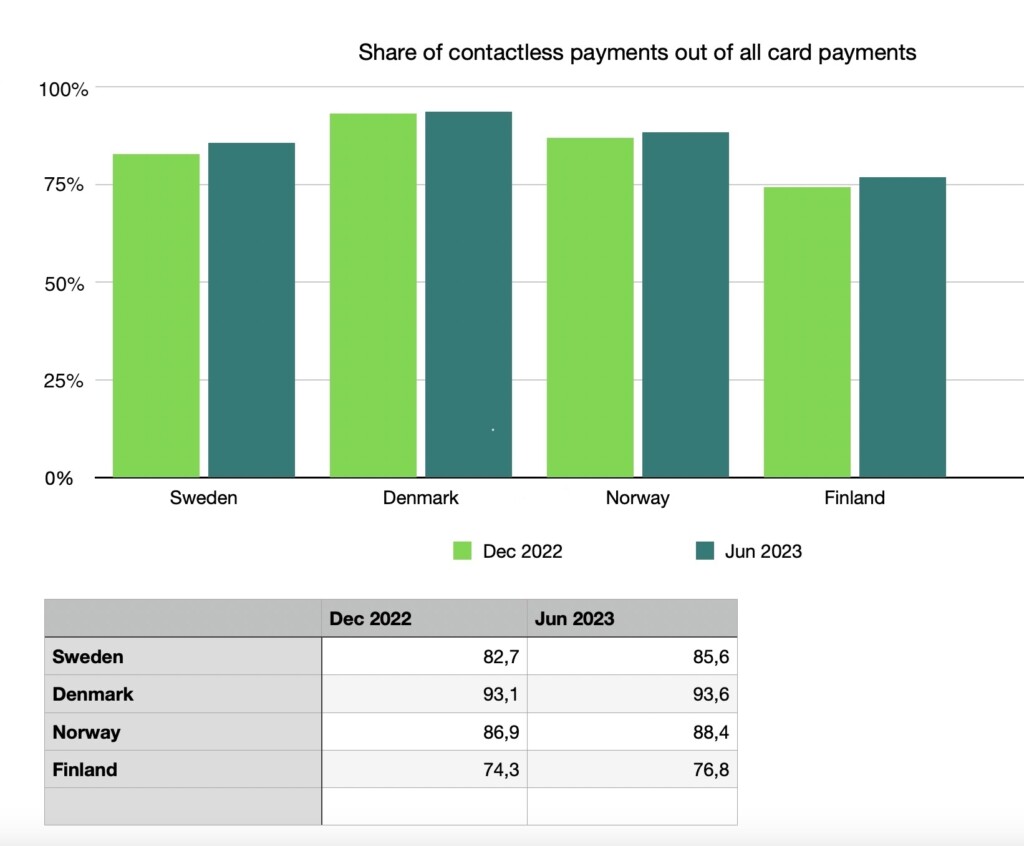
Nordic countries with their predominantly cashless societies also exhibit high adoption rates due to a strong digital infrastructure. Across the Nordics, mobile payments are the second most preferred payment method, behind card payments. About one-fifth of Danish and Swedish consumers prefer mobile payments the most.
According to the Nordic Payment Report 2023, conducted with Kantar Sifo, in Denmark, 96% of consumers use contactless payments, while 94% of local card payments are also made contactlessly. In Sweden, the percentage is 89% and 86%, respectively.
The vast majority of all Nordic consumers use contactless payments often, while only between 5% to 11% of respondents in the given countries never use this payment method.
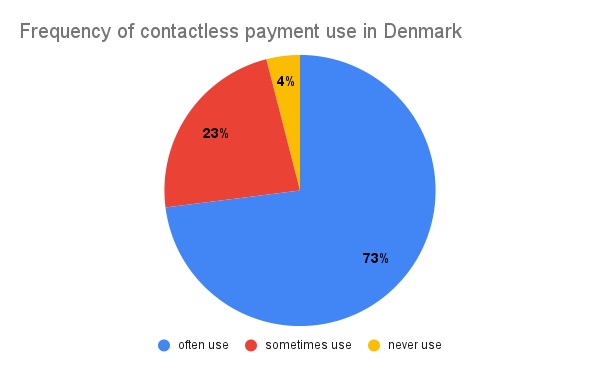
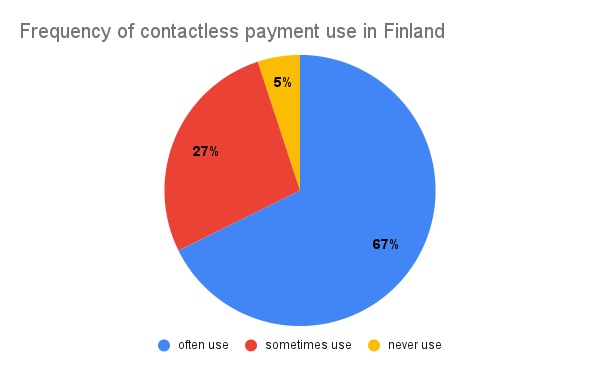
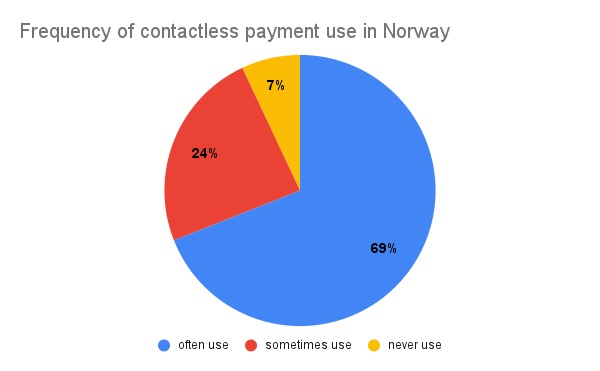
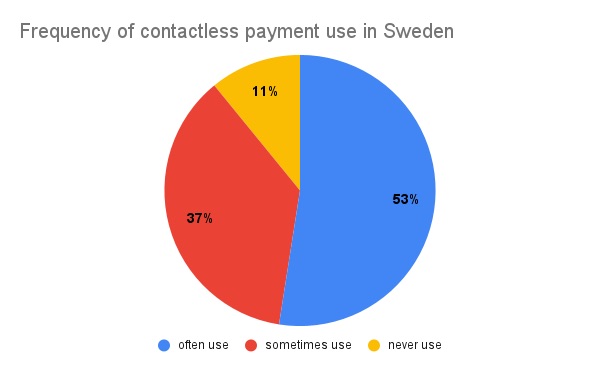
Who Lags Behind In Contactless Adoption and Why?
While mobile and contactless card payments are growing in most corners of the world, many regions in Sub-Saharan Africa, Latin America, Eastern Europe, and rural areas of India are slow to adopt the technology due to limited infrastructure, unfavorable economic factors, lower smartphone or banking penetration, and reliance on cash.
For the economically vulnerable population sectors, using cash is often the best way to keep track of their expenses and prevent debt from building up. On the other hand, studies have shown that the willingness to pay is much higher for debit cards and mobile payments than cash. Namely, the use of contactless bank cards leads to an estimated 8-10% increase of the spending ratio at the point of sale (POS). This way, people with lower income tend to avoid using contactless payments to keep their limited budget under better control.
US Has The Fastest-Growing Contactless Payment Market
In the US, the contactless payment adoption is relatively low (about 50%). Due to the late start, NFC-enabled payments are only now gaining momentum in the United States. Covid was the main push to develop the technology that constituted only a small fraction of total payments in 2019. During the three years post the pandemic, contactless payments in the US have grown more than sevenfold.
According to Mastercard observations, between 2020 and 2023, mobile device-based ‘tap-and-go’ transactions have surged. However, in the latest months, card-based contactless transactions have been the most common form of contactless payment in the US. The majority of contactless transactions in the country take place at eateries, gas stations and grocery stores.
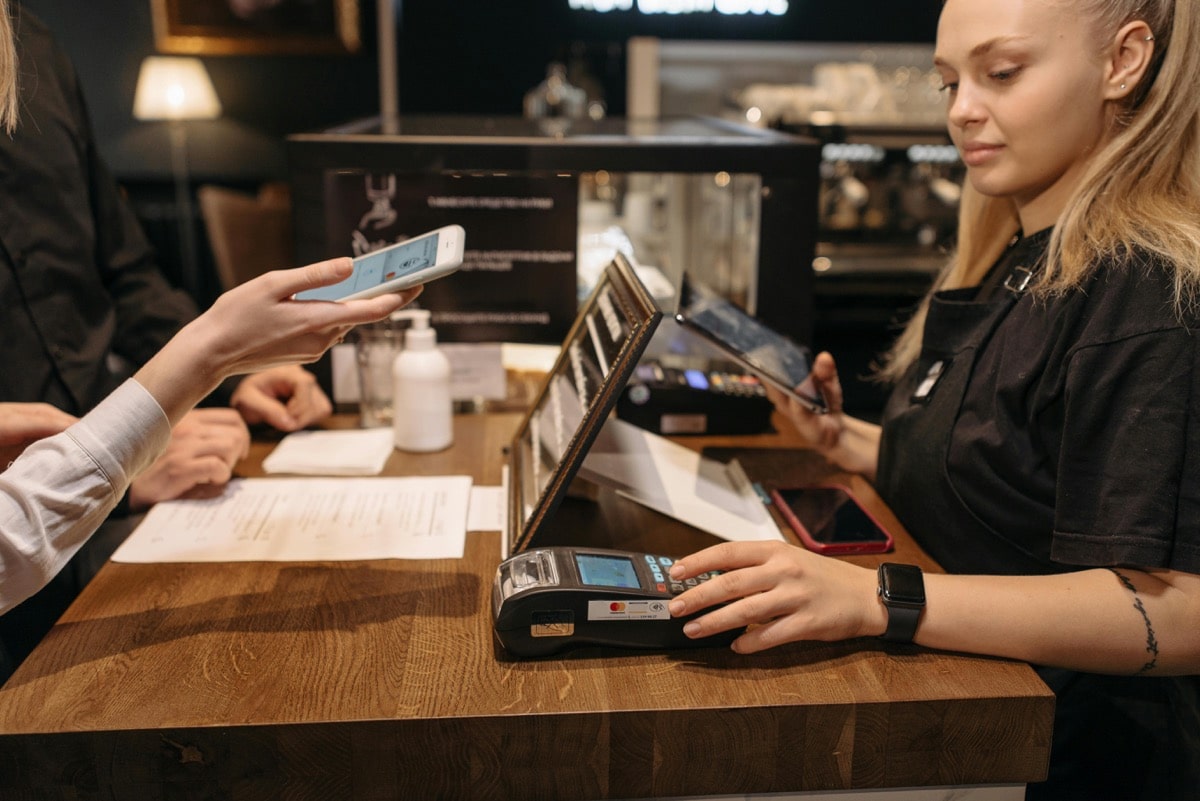
How Contactless Payments Are Evolving
More and more people are using contactless card and mobile wallet payments each year. With the rising popularity of contactless payment methods, the landscape of these payments changes. Today, in many regions, the usage of QR codes decreases substantially, taken over by mobile wallets.
NFC-Enabled Crypto Wallets
The same tendency may be expected in the sector of cryptocurrency payments. While today QR codes are often used to simplify the process of crypto transactions by encoding wallet addresses into an easily scannable format, a growing number of blockchain digital wallets support NFC technology. One example is the HTC Exodus ‘cryptophone’ that combines the usability of the smartphone and the security of a crypto hardware wallet with NFC function. Many cold crypto wallets and crypto storage apps like Binance, Nebeus, Carta, Uphold, Keepser or Bybit are also paired with NFC cards to make payments seamlessly.
Growth of Payment-Enabled Devices
The variety of contactless payment means is also increasing. It is not limited to cards and smartphones anymore. Many wearable devices have a contactless payment option too. The manufacturers are experimenting with the forms of payment accessories. Today, you can pay with a pen, ring, cap, cuff or a key ring, though these payment means are not mainstream. The continued improvement in NFC chips and their integration into more devices might create even more interesting use cases for contactless payments.
AI Role in Contactless Payment Evolution
The payment landscape’s evolution is happening along broader technological advancements. As artificial intelligence (AI) and machine learning are taking great strides, it won’t be too long until contactless mobile payments and QR-code payment solutions are boosted with AI capabilities. AI can better identify potentially fraudulent transactions in real time, which helps to solve one of the biggest concerns with contactless payments. Besides, natural language processing (NLP), which is a subset of artificial intelligence, can be used for initiating such transactions with one’s voice either by a merchant/cashier or a customer.
Future of Contactless Payments
Numbers and current trends suggest the bright future for contactless payment solutions. The global contactless payment market is expected to continue growing rapidly, with some forecasts predicting a compound annual growth rate (CAGR) of as much as 20-25% over the next few years. For instance, Juniper Research has forecast that the value of contactless payment transactions will reach $10 trillion globally by 2027.
By 2027, mobile payments could account for a significant majority of all contactless transactions, particularly in regions with high smartphone usage. According to a Juniper Research forecast, 99% of all smartphones will possess contactless payment capabilities by then. Today, by different estimates, about 94%-98% of existing smartphones are equipped with NFC technology. A forecast by RBR Global suggests that more than 80% of consumer credit cards will feature contactless payment technology by 2026.
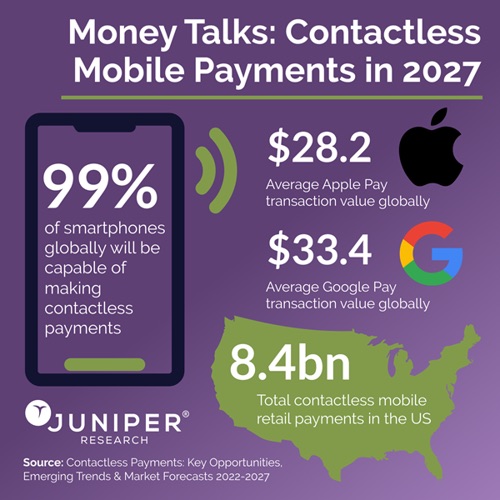
Source: Juniper Research
Expansion of POS Terminals That Accept Contactless Payments
Not only is the landscape of payment-enabled devices moving from powered devices like phones, watches or fitness trackers to powerless devices like jewelry, bracelets, and disposable wristbands. The types of contactless payment-accepting devices are also expanding. Earlier, merchants needed special, often costly, POS devices. The total global annual spending on POS software by retail and restaurant businesses surpassed $1 billion.
Today, they can use their own phones as payment terminals. So-called Soft POS solutions are growing in popularity, especially since Apple’s entrance into the sector. The range of NFC-enabled devices that can accept payments is expected to broaden, bringing more flexibility and convenience to the market. Besides, the latest generation of POS terminals running on Android enables developers and manufacturers to integrate far more features than simple payments (e.g. access to loyalty schemes).
Growth of Contactless Payment Infrastructure
The growth of contactless payments will be boosted by the expanded infrastructure. Firstly, more POS vendors will cater to the growing number of devices that offer NFC payment capabilities. Secondly, more NFC ticketing solutions will appear across public transport networks, creating more opportunities for contactless payments. By 2030, contactless payments will likely be fully integrated into public transportation systems in major cities worldwide. This will allow for seamless travel across different modes of transport, reducing the need for separate tickets or cards.
There is also great room for growth in the dining sector. Only 41% of full-service and 42% of limited-service restaurants planned to invest in contactless payment solutions in 2024. Investments in self-order and self-pay solutions were even lower. Meanwhile, over 60% of customers in this sector would pay using contactless or mobile options if available, states the US National Restaurant Association.
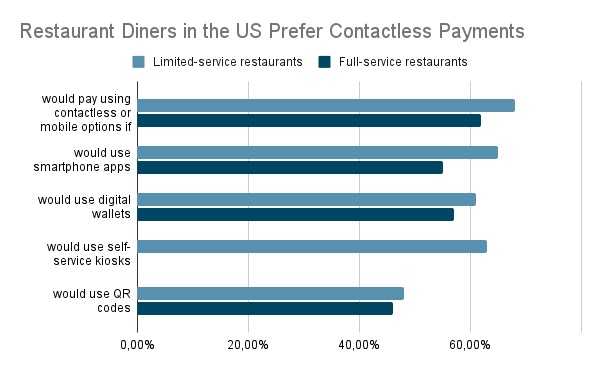
Multi-Purpose Tap
Finally, the next big thing in the contactless payment sector is multi-purpose tap. Industry experts from the NFC Forum, which has Apple, Google, Qualcomm and Sony among its board members, envision the future where payment cards or smart devices accomplish multiple functions at once when using NFC.
Some examples are picking up loyalty points or other promotions while paying for things in shops, automatically verifying your age when you’re buying age-sensitive things like alcohol, or receiving information about a product’s sustainability and recycling ways when buying goods. The multi-purpose tap “leverages the capability of NFC devices to allow both reading and writing of data across a connection.” That means that several actions, which typically take multiple stages, can be accomplished simultaneously.
Bottom Line
The Covid pandemic gave a great boost to contactless payments. Even after health worries subsided, consumer appetite for the convenience of contactless payments keeps growing. With the development of NFC infrastructure in most public places, transport, hotels and restaurants, volume and frequency of contactless payments increase exponentially.
In the future, we’ll see more variety in both payment devices and payment terminals used for contactless transactions. There’s much room for growth in the crypto sector which is only emerging as a real-life purchase facilitator. Besides, the development of technology might open new horizons in the near future, leveraging AI and novel multi-purpose capabilities.
While some of the global regions like China and Nordic countries have already embraced contactless payments to their fullest, the US is striving to keep up, quickly expanding the payment infrastructure.
The most potential growth is expected in Sub-Saharan Africa, Latin America, Eastern Europe, and rural areas of India. Today, these regions are slow to adopt the technology due to numerous socio-economic factors. However, with the right approach, this untapped potential can yield numerous opportunities for the financial industry.
The article was updated on Oct. 20, 2025, with relevant statistics and images.

